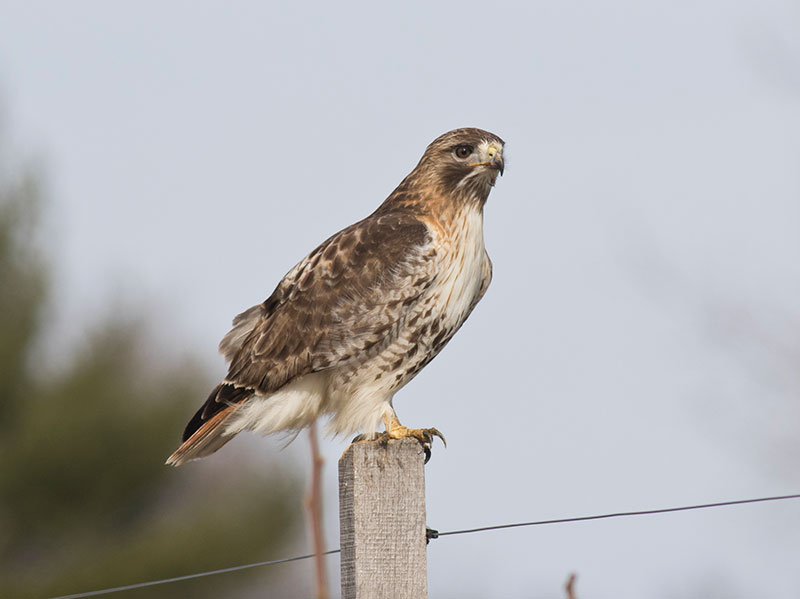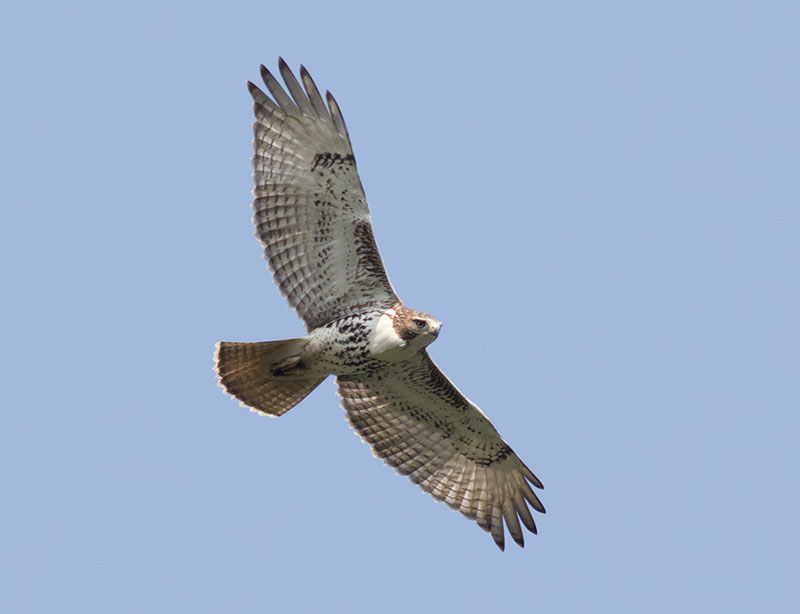Red-tailed Hawks
8/19/18
By David Brown

Adult Red-tailed Hawk
The red-tailed hawk (Buteo jamaicensis) is one of the most iconic birds in the United States. One must only watch the sky for a short time on a sunny day to see one soaring high above.
The red-tailed hawk is in the Buteo genus. Other hawks in this genus include the red-shouldered hawk and the broad-winged hawk. These hawks hunt by soaring and using their excellent vision to look for prey on the ground below. The red-tailed hawk's primary diet is mammals such as rabbits and squirrels. It is common to see red-tailed hawks soaring over residential areas but a hawk that is trying to catch small birds from a bird feeding area is more likely a Cooper's hawk.
Red-tailed hawks prefer open woodland habitat. Highways that cut through wooded areas often make great habitat because of the combination of open grassy areas to hunt and trees to perch in. If you see a hawk perched on a highway light pole it is probably a red-tailed hawk.
The red-tailed hawk's wingspan is about 4 feet. Females are larger than males but otherwise they look identical. They build stick nests in large trees.
Red-tailed hawks have a juvenile plumage for their first year. During this time their tail is brown with dark barring. After one year they replace their feathers and the tail becomes the eponymous red.

Juvenile Red-tailed Hawk
One strategy for learning to identify raptors is to first learn to identify the red-tailed hawk. The shape and color of other hawks can then be compared to this. For instance, falcons have wings that are more pointed and eagles look larger and darker. When looking at a perched red-tailed hawk one of the most distinctive features is the belly-band. This refers to a section of dark patterning that cuts across the otherwise white underside of the hawk. On a soaring red-tailed hawk, there are dark bars in the shoulder area. The are called patagial bars and are a trait that other similar species do not have.
The call of the red-tailed hawk is a harsh scream. It is often used as a sound effect in movies and is often used incorrectly as the call of eagles.
The range of the red-tailed hawk includes the entire continental United States and much of Canada. Across the range it has a large variation of plumage. In our area we have the “eastern” subspecies which tends to be more lightly marked underneath than the hawks farther west. Red-tailed hawks occur in our area the whole year. In winter a small proportion are much darker and more heavily marked. There are individuals that nest farther north and migrate south for the winter. Scientists are researching whether these birds should be classified as their own subspecies.
Pennsylvania has many hawk watches that count migrating raptors from September through November. The season total of all raptors combined is often in the tens of thousands. The peak of red-tailed hawk migration occurs in November. As many as 300 red-tailed hawks are sometimes counted in a single day when conditions are good. As you spent time outdoors over the next few months keep an eye on the sky for hawks, eagles, and other birds.